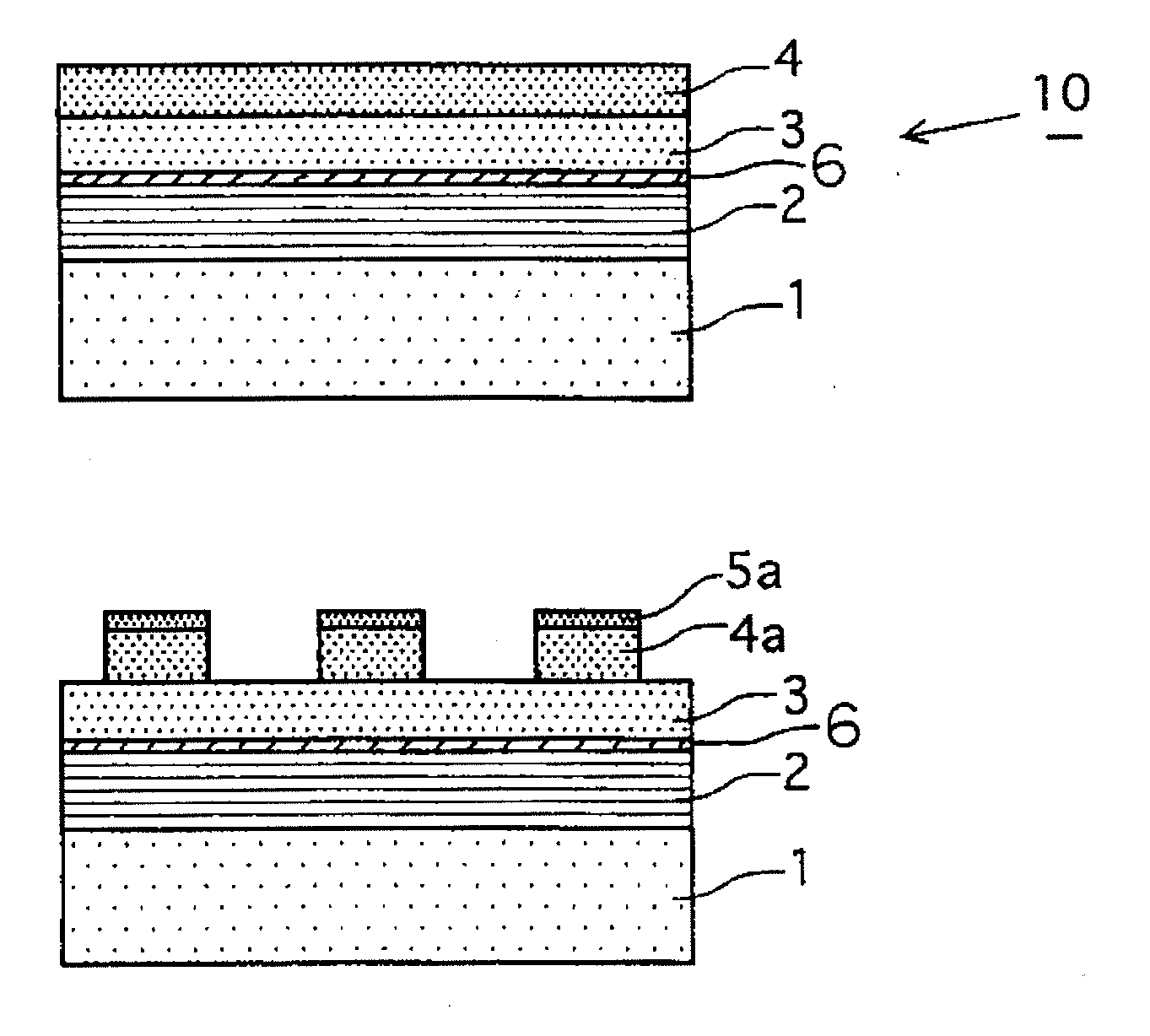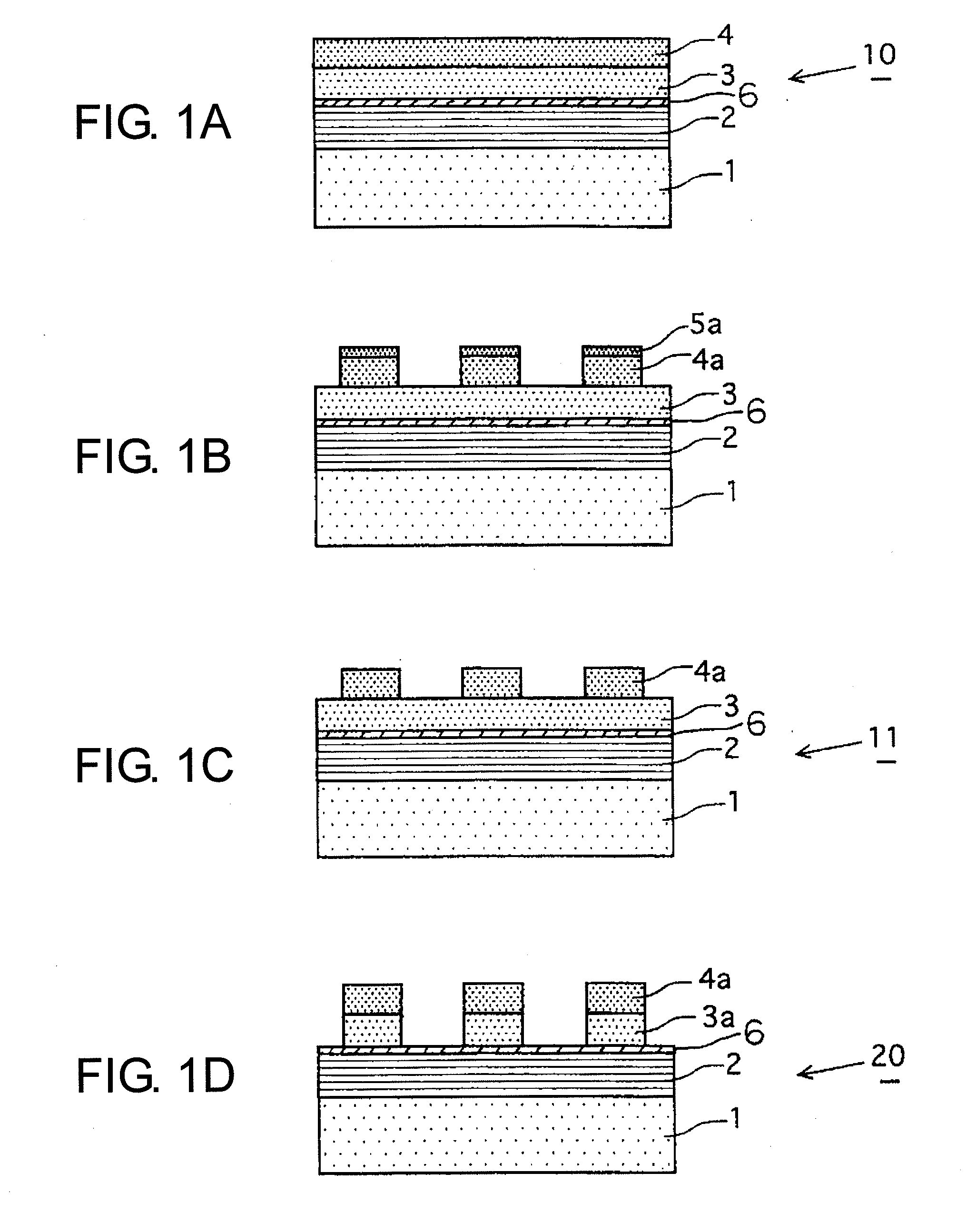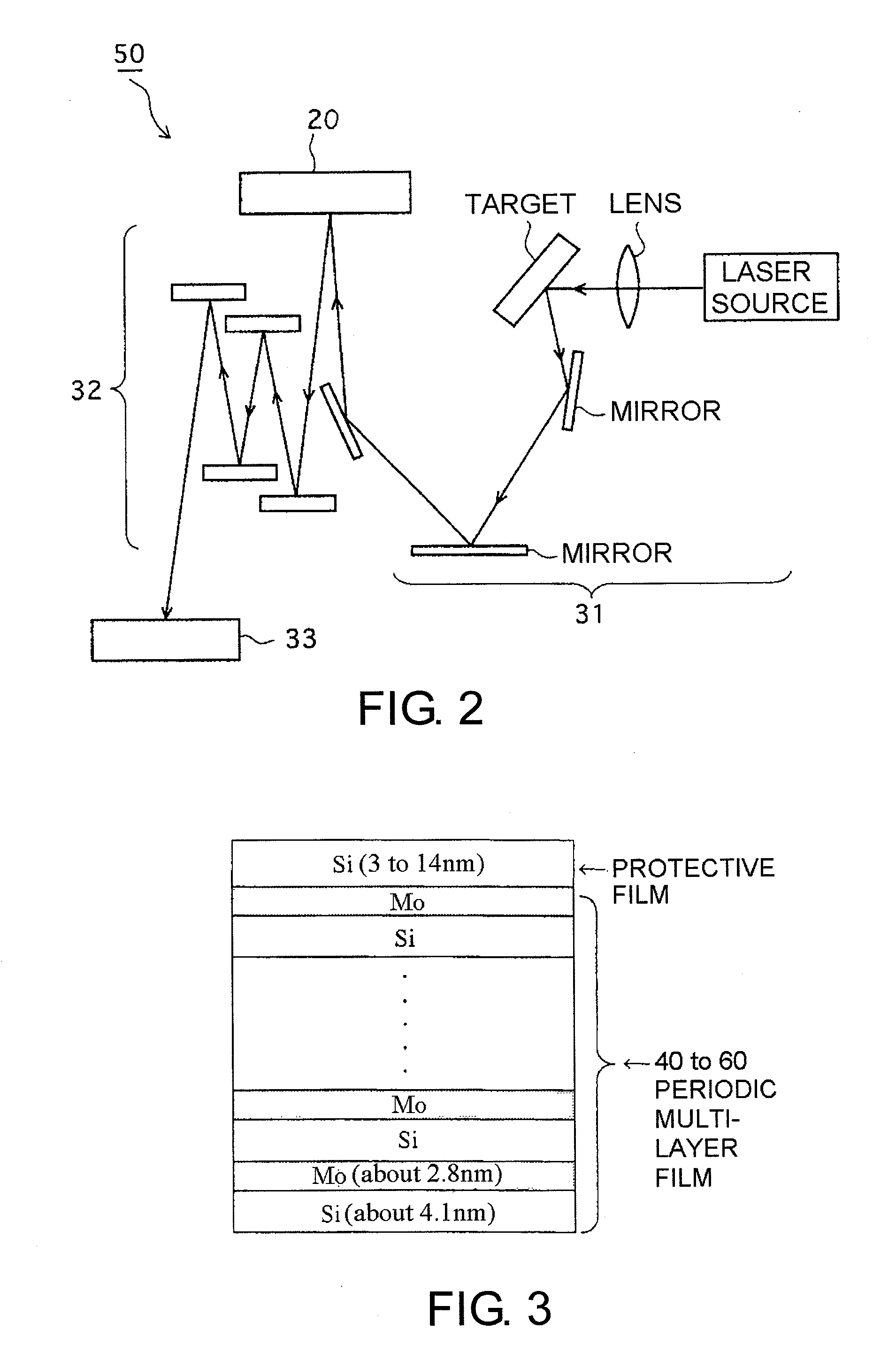Method of producing a reflective mask
a reflective mask and mask body technology, applied in the field of reflective mask production, can solve the problems of reducing the reflectance, insufficient anti-oxidation effect, disadvantage of ru film, etc., and achieve the effect of excellent chemical resistance and excellent resistance to an environmen
- Summary
- Abstract
- Description
- Claims
- Application Information
AI Technical Summary
Benefits of technology
Problems solved by technology
Method used
Image
Examples
example 1
[0084]A SiO2—TiO2 glass substrate (6-inch square, 6.3 mm thick) was used as a substrate. The glass substrate had a coefficient of thermal expansion of 0.2×10−7 / ° C. and a Young's modulus of 67 GPa. The glass substrate was polished by mechanical polishing to have a smooth surface of 0.2 nmRms or less and a flatness of 100 nm or less.
[0085]As a multilayer reflective film formed on the substrate, a periodic Mo / Si multilayer reflective film was used so as to be suitable for an exposure wavelength band between 13 and 14 nm. Specifically, the multilayer reflective film was formed by alternately laminating Mo and Si films on the substrate by ion beam sputtering using a Mo target and a Si target. Herein, a combination of the Si film having a thickness of 4.2 nm and the Mo film having a thickness of 2.8 nm is defined as a single period. After these films were laminated in 40 periods, deposition of the Si film to a thickness of 4.2 nm was performed at an end of deposition of the multilayer re...
PUM
 Login to View More
Login to View More Abstract
Description
Claims
Application Information
 Login to View More
Login to View More - R&D
- Intellectual Property
- Life Sciences
- Materials
- Tech Scout
- Unparalleled Data Quality
- Higher Quality Content
- 60% Fewer Hallucinations
Browse by: Latest US Patents, China's latest patents, Technical Efficacy Thesaurus, Application Domain, Technology Topic, Popular Technical Reports.
© 2025 PatSnap. All rights reserved.Legal|Privacy policy|Modern Slavery Act Transparency Statement|Sitemap|About US| Contact US: help@patsnap.com



